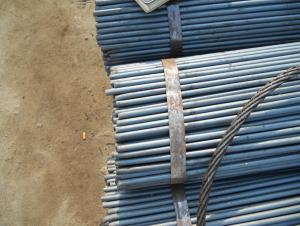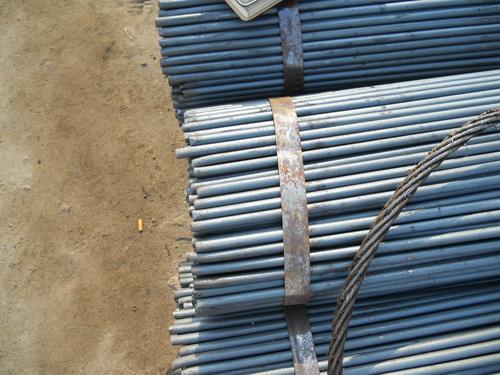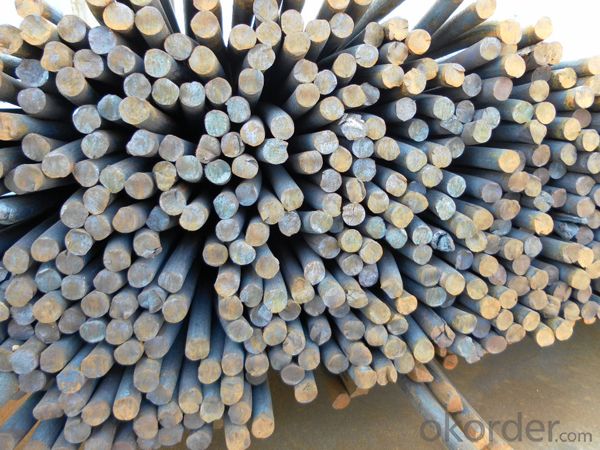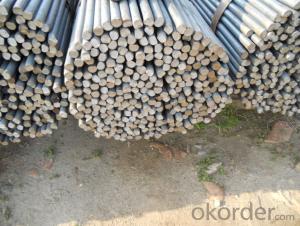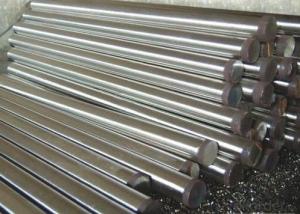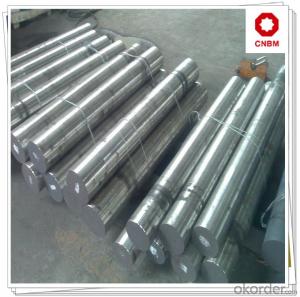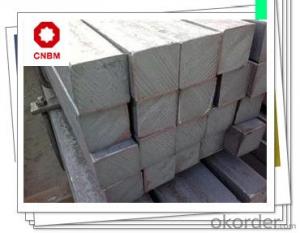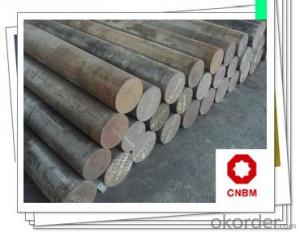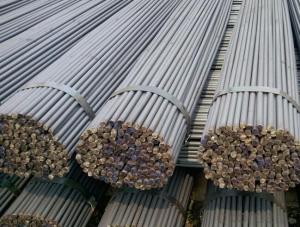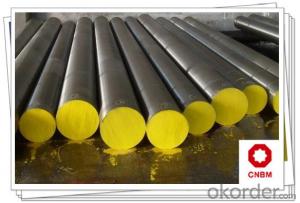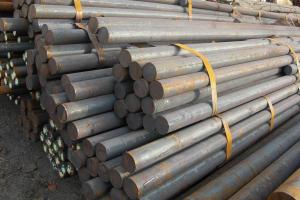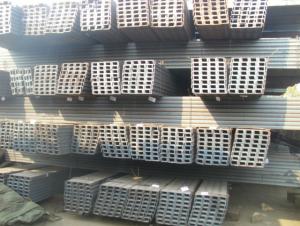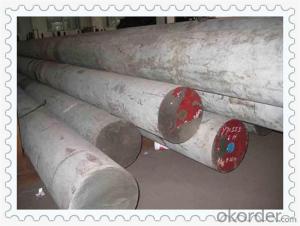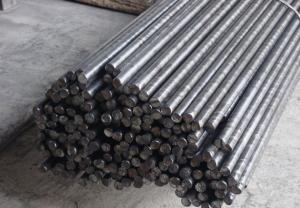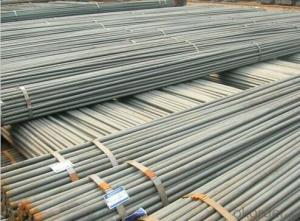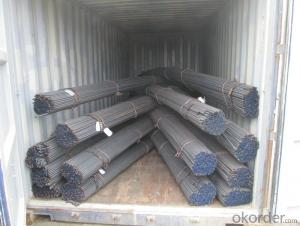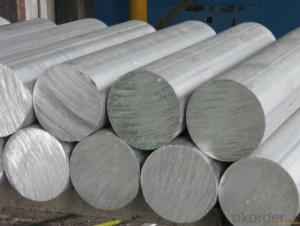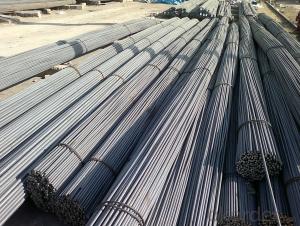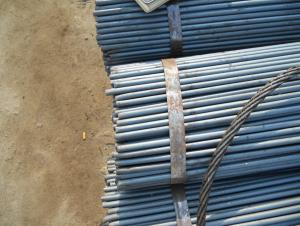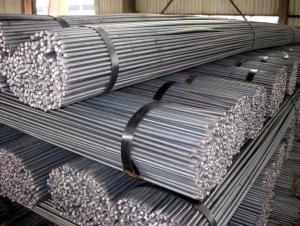GB Q345 Steel Round Bar
- Loading Port:
- China Main Port
- Payment Terms:
- TT OR LC
- Min Order Qty:
- -
- Supply Capability:
- -
OKorder Service Pledge
OKorder Financial Service
You Might Also Like
Specifications of Steel Round Bar:
1. Standard: GB
2. Grade: Q345
3. Invoicing on theoretical weight or actual weight as customer’s request
4. Shape: Round bar, solid bar of steel with circular section
5. Technique: Hot rolled
Size:
| Size (mm) | Section Area (cm2) | Mass (Kg/m) |
| 17 | 226.865 | 1.78 |
| 18 | 254.34 | 2.00 |
Usage and Applications of Hot Rolled Round Bar
1. Hot rolled round bar of 6-25mm, or small round is mostly used for straight bundles supply, and used for steel, bolts and various mechanical parts. While the bigger round bar, or more than 25mm hot rolled bar, is mainly for the manufacture of mechanical parts or for seamless steel billet.
2. Besides, we can supply some especial material steel round bar that can be used for main shaft of steamer, hummer shank, with big section and supper force.
* If you would like to get our price, please inform us the size, standard/material and quantity. Thank you very much for your attention.
- Q: Are steel round bars resistant to corrosion?
- Yes, steel round bars are generally resistant to corrosion due to their composition which includes a significant amount of chromium. This chromium forms a protective layer on the surface of the steel, preventing rust and corrosion. However, the resistance to corrosion may vary depending on the specific grade and environment in which the steel round bars are exposed.
- Q: What is the cost of steel round bars?
- The cost of steel round bars can vary depending on factors such as the size, grade, and market conditions. It is recommended to contact suppliers or check online catalogs for the most accurate and up-to-date pricing information.
- Q: Can steel round bars be used for making conveyor belts or rollers?
- Yes, steel round bars can indeed be used for making conveyor belts or rollers. Steel is a strong and durable material with excellent tensile strength, making it suitable for applications where heavy loads or continuous movement is involved. The round bars can be used to create the structural framework or support system of the conveyor belt or roller, providing stability and rigidity. Additionally, steel is resistant to wear and tear, and can withstand high temperatures, making it ideal for industrial settings. However, it's important to consider other factors such as the specific requirements of the conveyor system, the type of material being transported, and any potential corrosion issues that may arise.
- Q: Can steel round bars be used in the manufacturing of heat exchangers?
- Yes, steel round bars can be used in the manufacturing of heat exchangers. Steel is a commonly used material in heat exchanger construction due to its high strength and thermal conductivity. Steel round bars can be formed and welded into various shapes and sizes to create the necessary components of a heat exchanger, such as tubes, headers, and baffles. The steel material also provides durability and resistance to corrosion, making it suitable for use in various industrial applications where heat transfer is required.
- Q: Are steel round bars suitable for use in the construction of bridges?
- Yes, steel round bars are suitable for use in the construction of bridges. Steel round bars offer several advantages that make them an ideal choice for bridge construction. Firstly, steel round bars have high tensile strength, which means they can withstand heavy loads and forces without deforming or breaking. This is crucial for bridges as they need to support the weight of vehicles and pedestrians crossing over them. The high tensile strength of steel round bars ensures the structural integrity and safety of the bridge. Additionally, steel round bars have excellent durability and corrosion resistance. Bridges are often exposed to harsh environmental conditions, such as rain, snow, and saltwater, which can lead to corrosion and degradation of materials. However, steel round bars are specifically designed to resist corrosion, ensuring the longevity and reliability of the bridge. Moreover, steel round bars are readily available in various sizes and lengths, making them versatile and adaptable for different bridge designs and configurations. Their uniform circular shape also simplifies the construction process, as they can be easily cut, bent, and welded to fit the required specifications. Furthermore, steel round bars offer cost-effectiveness in bridge construction. They have a favorable strength-to-weight ratio, meaning they can provide the necessary strength while minimizing the overall weight of the bridge. This reduces the amount of material needed and lowers transportation costs during construction. In conclusion, steel round bars are highly suitable for use in the construction of bridges due to their high tensile strength, durability, corrosion resistance, versatility, and cost-effectiveness. They provide the necessary strength and reliability to support heavy loads and withstand harsh environmental conditions, ensuring the safety and longevity of the bridge.
- Q: How are steel round bars used in the construction of airports and runways?
- Steel round bars are commonly used in the construction of airports and runways for various purposes. They are primarily used to reinforce the concrete structures, such as the foundation, columns, beams, and slabs. The round bars provide strength and durability to the concrete, ensuring that it can withstand heavy loads and resist cracking or collapsing. Additionally, steel round bars are also used in the construction of drainage systems, fencing, and other infrastructure components within airports and runways.
- Q: What is the difference between a polished and a precision ground steel round bar?
- A polished steel round bar refers to a bar that has undergone a polishing process to achieve a smooth and shiny surface finish. This process involves using abrasive materials to remove any imperfections or roughness on the surface of the bar. The end result is a visually appealing bar with a high level of aesthetic appeal. On the other hand, a precision ground steel round bar is a bar that has been precisely ground to achieve tight dimensional tolerances and a smooth surface finish. This grinding process involves removing material from the surface of the bar using grinding wheels or other cutting tools. The purpose of precision grinding is to ensure that the bar meets specific size and shape requirements, making it suitable for use in applications that demand precise dimensions and tight tolerances. In summary, the main difference between a polished and a precision ground steel round bar lies in the purpose of the respective finishing processes. Polishing is primarily done for aesthetic reasons, enhancing the appearance of the bar, while precision grinding focuses on achieving precise dimensions and tight tolerances to meet specific technical requirements.
- Q: Can steel round bars be used as axles or shafts?
- Yes, steel round bars can be used as axles or shafts. Steel is a commonly used material for axles and shafts due to its high strength and durability. Steel round bars are particularly suitable for applications requiring rotational motion, such as axles and shafts, as they can handle heavy loads and withstand bending and torsional forces. Additionally, steel round bars can be machined and heat-treated to meet specific requirements for hardness and surface finish, further enhancing their suitability as axles or shafts. Overall, steel round bars are a reliable and widely used choice for axles and shafts in various industries, including automotive, machinery, and construction.
- Q: What is the difference between a hot-rolled and a peeled steel round bar?
- The production of a hot-rolled steel round bar involves heating a billet or ingot until it reaches a temperature suitable for shaping. The heated steel is then passed through a series of rollers to achieve the desired shape and size. This rolling process results in a bar with a rough surface texture and a slightly rounded edge. In contrast, a peeled steel round bar goes through a different manufacturing process. It is initially hot-rolled to achieve the desired shape and size, similar to the hot-rolled bar. However, after the initial hot rolling, the peeled bar undergoes a mechanical peeling process. This process entails removing the outer layer of the bar to achieve a smooth and shiny surface finish. Additionally, the peeling process contributes to improving the dimensional accuracy and surface quality of the bar. To summarize, the key distinction between a hot-rolled and a peeled steel round bar lies in the surface finish and dimensional accuracy. While a hot-rolled bar possesses a rough surface texture and a slightly rounded edge, a peeled bar exhibits a smooth and shiny surface finish with enhanced dimensional accuracy. The peeling process elevates the overall quality and appearance of the steel round bar, making it more appropriate for applications where aesthetics or precision hold significance.
- Q: What are the common finishes for steel round bars?
- The common finishes for steel round bars include hot rolled, cold drawn, turned and polished, and centerless ground.
Send your message to us
GB Q345 Steel Round Bar
- Loading Port:
- China Main Port
- Payment Terms:
- TT OR LC
- Min Order Qty:
- -
- Supply Capability:
- -
OKorder Service Pledge
OKorder Financial Service
Similar products
Hot products
Hot Searches
Related keywords
